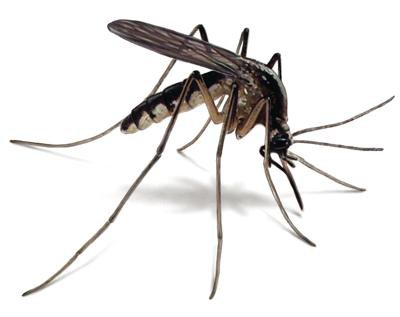The Aedes aegypti mosquito – also known as the mosquito that can carry the Zika virus and other communicable diseases – has officially arrived in San Joaquin County.
On Monday the San Joaquin County Mosquito and Vector Control District announced that the invasive species, which was detected in neighboring Stanislaus County last month, was discovered in traps that were set last week just outside of the Stockton gated community of Brookside – prompting a response that includes extensive inspections of the area.
“Our first goal is to control and limit the presence of this invasive mosquito species,” said Ed Lucchesi, the district’s manager. “We are doing everything possible now to ensure these mosquitoes do not become established in our communities; however, this type of mosquito can be very difficult to eliminate.”
While the district had deployed additional traps along the north side of the Stanislaus River to detect the mosquito that they believed would come into county from the south, the Aedes Aegypti appears to have come in from the San Joaquin River Delta – an area that the district routinely sprays to eradicate adult populations that can carry the West Nile Virus. In addition to potentially carrying the Zika virus, the new mosquitoes are also capable of carrying dengue, chikungunya, and yellow fever. The new mosquito discovery, however, changes the dynamics of the district’s operations when it comes to trying to keep invasive species in check – particularly since the Aedes aegypti mosquito is active during the daylight hours as well and has no problem existing in populated urban areas.
And controlling the population of the new arrival will require a different approach as well.
According to district spokesman Aaron Devencenzi, eradication is extremely difficult because the mosquitoes are able to lay their eggs in standing water as small as a capful of water, and once they are laid, they are viable even without water present for up to six months.
That means, Devencenzi said, that the eggs could typically weather an entire dry season, and when water is reintroduced, the larvae is ready to hatch – potentially extending the season in mosquitoes are active in the community.
While residents are urged to take precautions when outdoors to prevent daytime mosquito bites, the district is also reminding people that the traditional mosquito populations of concern – which are most active at the dawn and dusk hours – are still plentiful in San Joaquin County, and mosquitoes carrying the West Nile Virus have already been detected in the county this year. A human case of West Nile Virus was reported in Stanislaus County last month, and more than 40 mosquito samples containing the virus – which can be deadly – have been detected in San Joaquin County.
In order to help fight the conditions that make mosquito breeding possible, and to protect against mosquitoes that possibly carry West Nile or other transmittable viruses, San Joaquin County Public Health Services recommends a number of steps to be taken, including:
Checking your property for standing water and eliminating it as needed. Abandoned swimming pools were a major breeding ground for mosquitos during the economic downturn, but something as small as an old tire or a bucket that has collected rain or sprinkler water can provide the environment necessary for mosquitos to breed.
Applying mosquito repellant that contains the ingredients DEET or Picaridin when outdoors in accordance with usage instructions.
Avoiding being outside when mosquitoes are the most active, which is typically at dawn and at dusk, and especially for the first two hours after sunset.
Wearing long pants, long-sleeved shirts, and other protective clothing when forced to be outdoors – especially during peak activity times.
Making sure that windows and doors have tight-fitting screens to keep active mosquitoes outside of the home.
The virus is typically carried by birds and transmitted by mosquitos who feed on their carcasses and then bite humans. The State of California has a website to report dead birds for removal and subsequent study that can be found at www.westnile.ca.gov.
To report unusually strong mosquito infestations or daytime biting contact the San Joaquin Mosquito and Vector Control District at 209.982.4675 or visit them on the web at www.sjmosquito.org.
To contact reporter Jason Campbell email jcampbell@mantecabulletin.com or call 209.249.3544.





